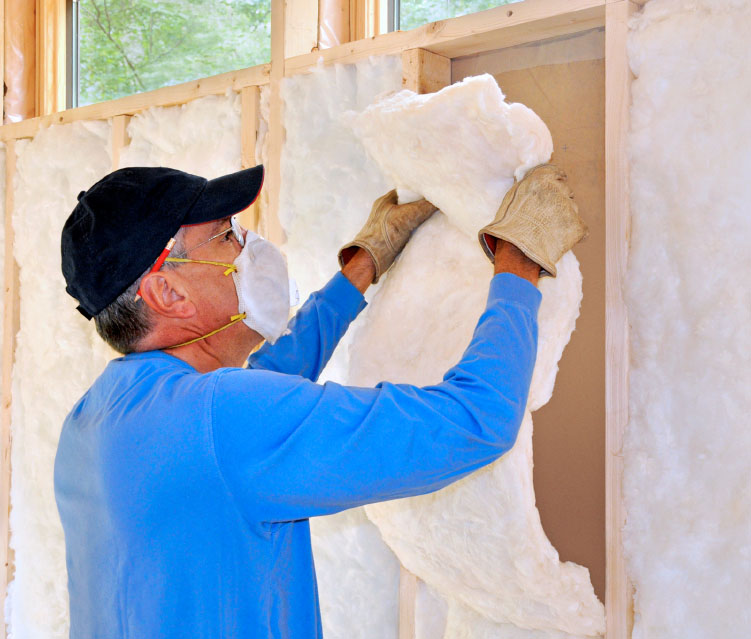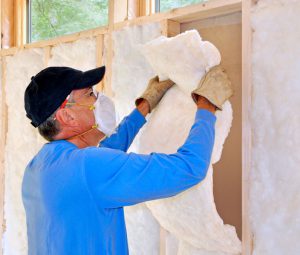
Energy costs that go to conditioning the air in a home add up to about half of its overall energy consumption. Improving the competence of the building envelope and using insulation  with R-values that exceed those stipulated by the local building code will help to reduce the homeowner’s energy consumption.
with R-values that exceed those stipulated by the local building code will help to reduce the homeowner’s energy consumption.
When selecting insulation, construction professionals must take into account climate zone, code requirements, budget, home design and the efficiency of the other components which make up the wall system. The US Department of Energy offers a free code compliance program which makes it easy for construction professionals to see the code requirements of the area in which they are building. You can access REScheck here.
Cavity insulation offers the most bang for your insulating buck, the most common types include blanket batts and rolls as well as spray insulation. It is critical with all types of insulation that it be installed according to the manufacturer’s instructions to avoid thick and thin areas, voids, gaps and settling at the cavity bottom. According to the US Department of Energy, this can reduce the effectiveness of cavity insulation by up to 25% so having an experienced installed is very important for a quality job.
Blanket batts and rolls
Made from a variety of materials from rock wool to fiberglass, blanket batts and rolls are the most common kinds of cavity insulation. They generally offer an R-value of R-3 to R-4 per inch of thickness when installed properly according to the manufacturer’s instructions. There are some manufacturers producing high performance products that may offer higher R-values.
Advantages: This is the cheapest form of insulation which is fire resistant and won’t settle over time.
Disadvantages: The batts or rolls must be hand cut to fit into wall cavities and small gaps between sections of insulation can mitigate the effectiveness of the wall insulation. Fiberglass batts pose a health threat during installation so proper protection should always be worn.
Spray-in-place insulation
Cellulose, fiberglass or mineral wool insulation is blown into the wall cavity. If properly installed according to the manufacturer’s instructions, it can offer an R-3 or R-4 insulation per inch of thickness.
Advantages: This is a great way to insulate around objects or in difficult-to-reach areas. This kind of insulation prevents moisture transfer better than the other options.
Disadvantages: This kind of insulation is more costly and requires special equipment. Since it expands to fill the wall cavity, it can result in better sealing which goes some way to mitigate the extra costs. Unless the cavity is properly filled, settling can occur over time which reduces the effectiveness of the insulation.
Rigid Foam Insulation
Here lightweight foam boards are made from polystyrene, polyurethane or polyisocyanurate which are molded into lightweight boards which come in a variety of sizes.
Advantages: This kind of insulation is easy to install and requires no special equipment. It offers a higher insulation value at R-4 to R-6 per inch of thickness.
Disadvantages: When used internally, rigid foam must be accompanied by a thermal barrier and when used for external applications, a weather-resistance barrier must be used to prevent moisture from penetrating the wall system. Wood sheathing panels are also required to brace the wall. If not properly installed, small gaps between insulation boards will reduce R-value.
